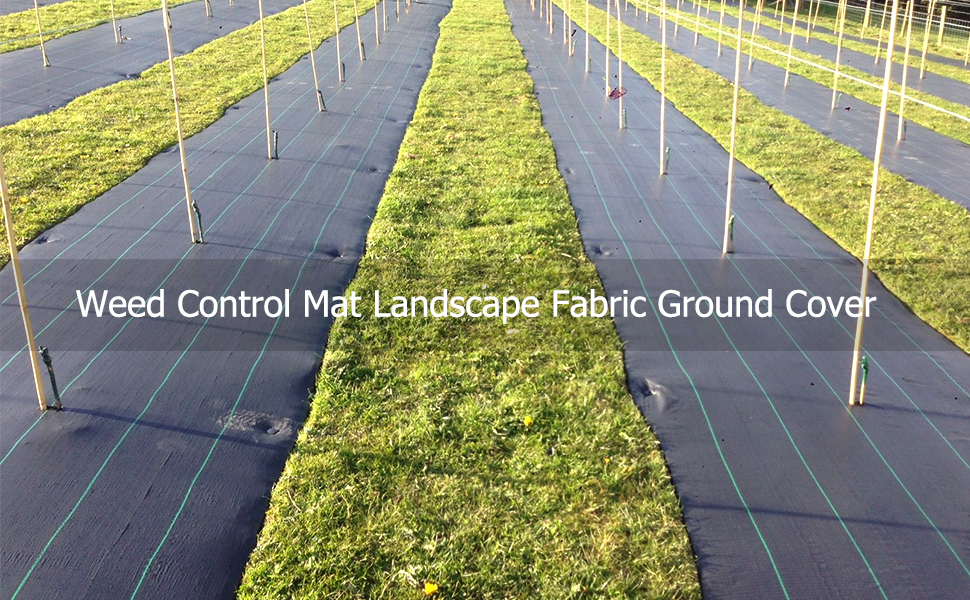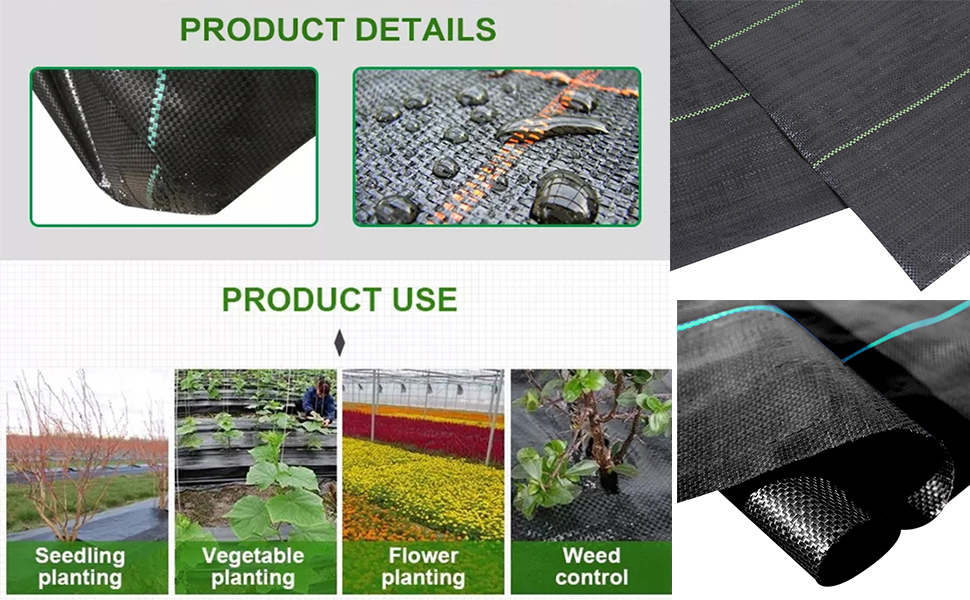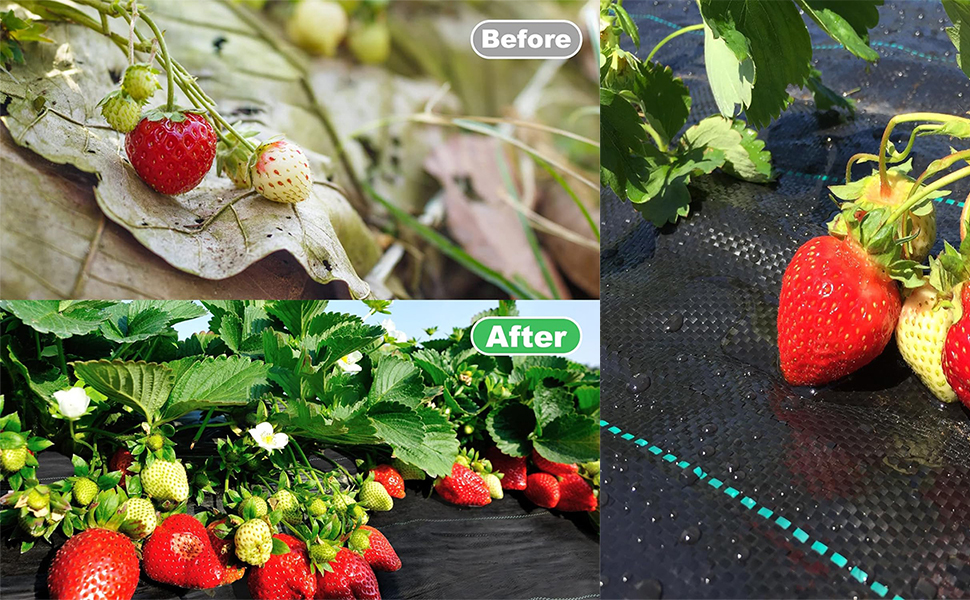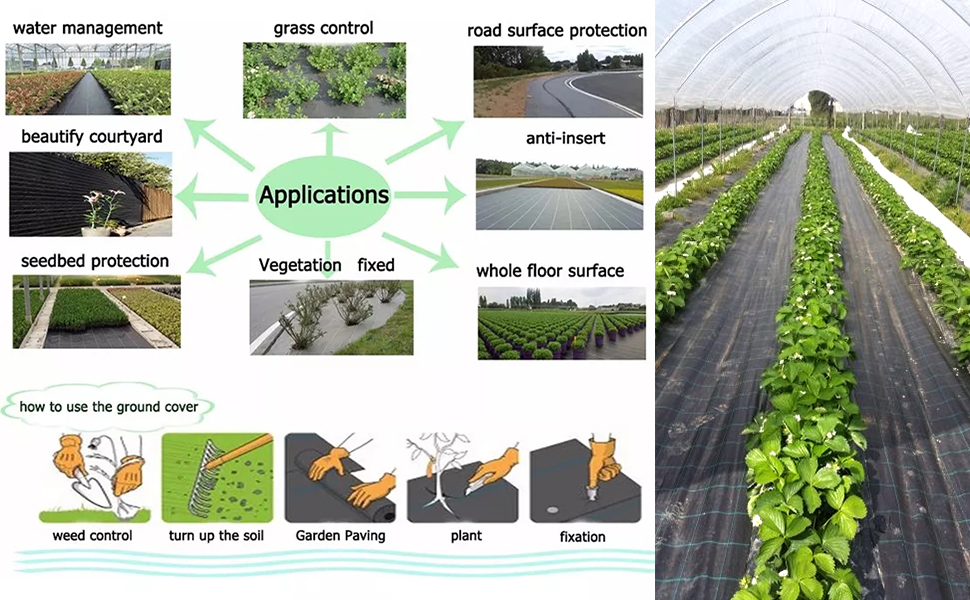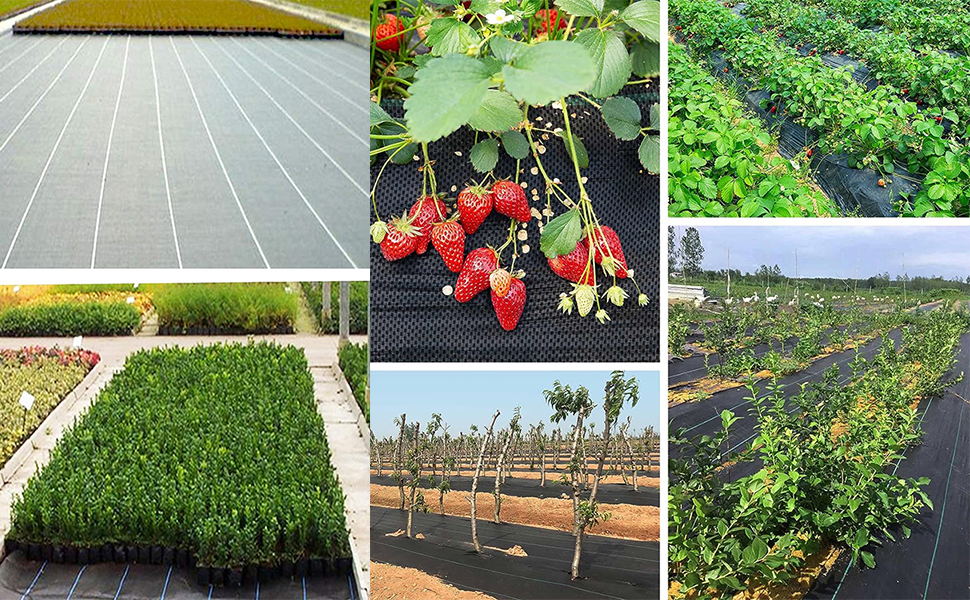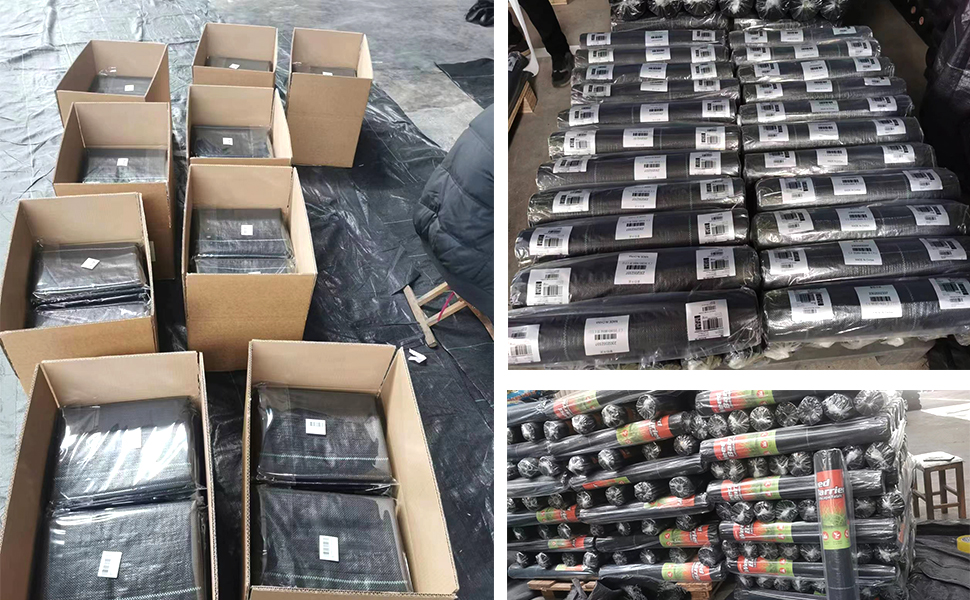Landscape Fabric for Weed Control
Color: Black,Green,White
Weight: 30gsm,40gsm,50gsm,60gsm,70gsm,90gsm
Material: PP
Customize:Support customized size, color and weight
Landscape fabric is a textile material used to control weeds by inhibiting their exposure to sunlight. The fabric is normally placed around desirable plants, covering areas where other growth is unwanted.
landscape fabric. Commonly known as a weed-barrier, landscape fabric isn’t just for weed control. It’s a multi-tool rolled up in a convenient, easy-to-use package.
Keeping weeds at bay
One of the major uses of landscape fabric is to help control weeds in planting beds, under decks and beneath patios and paths. Fabrics work to block weed growth by shutting out light while allowing air and moisture in.
Plastic prevents the air and moisture exchange necessary to maintain healthy soil ecology. Even when holes are cut into plastic to allow for plantings, the moisture and nutrient-starved soil underneath most of the bed prevents plants from thriving as they grow and their roots extend. Like plastic, fabrics block the weeds, but they do it while allowing soil to breathe.
Some contractors use fabric under planting beds whether they use rock or organic mulches. Others use it only under rock mulch because they prefer to allow their organic mulches to decompose freely into the soil. For those who prefer to use old mulch to build new soil, a shorter-term fabric is an option. In this case, the fabric is removed and replaced every few years to allow decomposed mulch to combine with soil.
Installing weed barrier
Ground should be smooth and free of debris to ensure good contact. Weed barrier can be installed either before or after planting, depending on the size of the bed, the spacing of the plants and the preference of the installer.
If plants are installed after the fabric has been put down, the fabric is sliced with “X’s” where plants will be inserted. Then the flaps are folded away to make a hole. After plants are inserted, the fabric is folded back close to the plant base. If fabric is to be placed after planting, X’s are measured, marked, and cut into the fabric before it is laid down. Then the fabric is placed over the bed and the plants are pulled through X’s.
When laying fabric, it’s important to overlap pieces to make sure there are no gaps that would allow light in. It’s also important to fasten the fabric securely with pins around the edges and at the overlaps to keep it from shifting and to keep determined weeds from pushing their way up far enough to catch.
